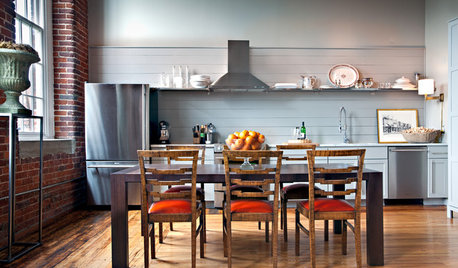I Bought For my Worms
equinoxequinox
13 years ago
Related Stories

LIGHTINGSo You Bought a Cave: 7 Ways to Open Your Home to Light
Make the most of the natural light your house does have — and learn to appreciate some shadows, too
Full Story
GARDENING GUIDESHouzz TV: Make a Worm Bin for Rich Soil and Happy Plants
A worm-powered compost bin that can fit under a sink turns food scraps into a powerful amendment for your garden. Here’s how to make one
Full Story
WINTER GARDENING6 Reasons I’m Not Looking Forward to Spring
Not kicking up your heels anticipating rushes of spring color and garden catalogs? You’re not alone
Full Story
FUN HOUZZEverything I Need to Know About Decorating I Learned from Downton Abbey
Mind your manors with these 10 decorating tips from the PBS series, returning on January 5
Full Story
DECORATING GUIDESThe Dumbest Decorating Decisions I’ve Ever Made
Caution: Do not try these at home
Full Story
GARDENING GUIDESHow I Learned to Be an Imperfect Gardener
Letting go can lead to a deeper level of gardening and a richer relationship with the landscape. Here's how one nature lover did it
Full Story
KITCHEN DESIGNWhy Your Kitchen Wants Its Own iPad
Cooking-school gateway, recipe database, foodie networking ... an iPad in the kitchen has uses far beyond being a message center
Full Story
KITCHEN DESIGNSingle-Wall Galley Kitchens Catch the 'I'
I-shape kitchen layouts take a streamlined, flexible approach and can be easy on the wallet too
Full Story
EXTERIORSHelp! What Color Should I Paint My House Exterior?
Real homeowners get real help in choosing paint palettes. Bonus: 3 tips for everyone on picking exterior colors
Full Story
FEEL-GOOD HOME12 Very Useful Things I've Learned From Designers
These simple ideas can make life at home more efficient and enjoyable
Full StoryMore Discussions






11otis
CathyCA SoCal
Related Professionals
Simpsonville Landscape Architects & Landscape Designers · San Juan Landscape Architects & Landscape Designers · Bedford Heights Landscape Contractors · North Lauderdale Landscape Contractors · North Potomac Landscape Contractors · Pacifica Landscape Contractors · Salem Landscape Contractors · Big Lake General Contractors · Browns Mills General Contractors · Country Club Hills General Contractors · Dunedin General Contractors · Fridley General Contractors · Mililani Town General Contractors · New River General Contractors · Winton General ContractorsequinoxequinoxOriginal Author
11otis
equinoxequinoxOriginal Author
equinoxequinoxOriginal Author
antoniab
equinoxequinoxOriginal Author
hoodat